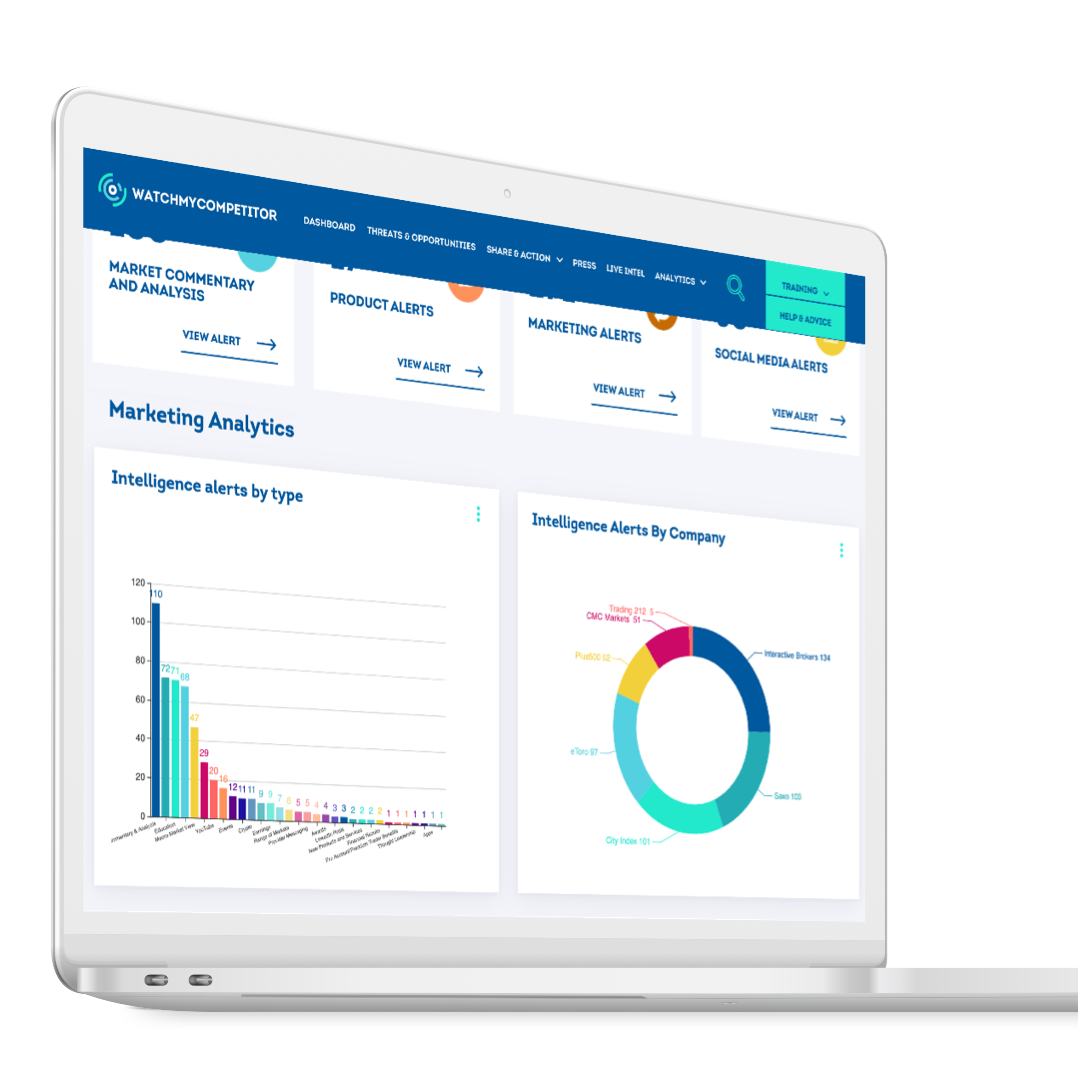In today’s highly competitive digital landscape, businesses need to constantly innovate and stay ahead of their rivals to succeed in content marketing. One effective strategy that can help businesses gain a competitive edge is harnessing the power of competitor content analysis.
By thoroughly analysing the content produced by your competitors, you can gain valuable insights that will help you refine and enhance your own content marketing efforts.
In this article, we will delve deeper into how competitor content analysis can significantly impact your content marketing strategy. By providing you with the necessary tools and knowledge, competitor content analysis can help you identify opportunities, stay abreast of emerging trends, and uncover gaps in the market.

What Is Competitor Content Analysis & Why Is It Important?
Competitor content analysis can simply be defined as the process of researching and evaluating your industry competitors’ content strategies, identifying their specific strengths and weaknesses, and utilising this knowledge to enhance your own marketing strategies.
Understanding your competitors’ content strategies and performance offers significant benefits to your content marketing efforts.
Firstly, competitor content analysis allows you to benchmark your own content against that of your rivals. By analysing their content, you can identify areas for improvement, gain inspiration, and innovate to provide more unique value to your audience.
Also, competitor content analysis helps you uncover successful content types, topics, and distribution channels that resonate with your target audience. By leveraging these insights, you can tailor your content to meet your audience’s needs and preferences, ultimately increasing engagement and driving conversions.
Identifying Your Content Competitors
Before diving into competitor content analysis, it is crucial to identify your main content competitors in your industry or niche. Look for businesses or websites that consistently produce high-quality content and attract a similar audience to yours.
By examining their content closely, you can gain a better understanding of their strategies and positioning. This knowledge will guide you in crafting a unique value proposition that differentiates your content and helps you stand out from the crowd.
Additionally, understanding your content competitors will enable you to keep a watchful eye on their activities, ensuring you are well-informed about industry trends and shifts.
Analysing Competitor Content Strategies
Once you’ve identified your competitors, it’s time to delve deeper into their content strategies. Evaluate the types of content they create, such as blog posts, videos, infographics, podcasts, or interactive content.
Take note of the topics they cover and how they distribute their content across various channels, such as social media platforms, email newsletters, or guest posting on industry websites.
By analysing these factors, you can gain insights into what resonates with your target audience and identify gaps in the market that you can fill. Furthermore, analysing competitor content strategies helps you identify emerging trends that you can leverage to create more impactful and relevant content.
Assessing Your Competitora’ Content Performance
Measuring the performance of your competitors’ content is essential to evaluate their success and identify areas where you can outperform them. Key performance indicators (KPIs) play a crucial role in assessing content performance. These can include website traffic, social media engagement metrics (likes, comments, shares), backlinks, organic search rankings, and conversions.
By comparing your own content performance against your competitors, you can gain valuable insights into the effectiveness of your content marketing efforts. This analysis helps you identify strengths, weaknesses, and potential opportunities for improvement.
Tools for Competitor Content Analysis
There are a number of tools available to help you with competitor content analysis. Some of the most popular options include:
SEMRush

SEMrush offers a comprehensive suite of tools for competitor analysis, including content analysis. It allows you to analyse your competitors’ organic and paid search strategies, backlinks, keyword rankings and wider content performance.
Ahrefs

Ahrefs is a powerful SEO tool that provides in-depth competitor analysis. It offers features such as backlink analysis, keyword research, content explorer, and site explorer, allowing you to gain valuable insights into your competitors’ content strategies..
BuzzSumo

BuzzSumo specializes in content analysis and allows you to discover the most popular content in your industry. You can analyze your competitors’ content performance, identify trending topics, and find influential content creators.
SimilarWeb

SimilarWeb provides insights into your competitors’ website traffic, audience demographics, and content performance. It helps you understand the sources of traffic and the engagement levels of your competitors’ content.
WatchMyCompetitor

WatchMyCompetitor is a competitor intelligence platform that allows users to monitor other organisations’ global digital footprint. This is a tool that can also help you track your competitors’ content performance across a variety of channels, including social media, search engines, and their own websites.
WatchMyCompetitor & Competitor Content Analysis
Each of the above-mentioned tools has its own strengths and weaknesses, so it is important to choose the one that best meets your needs. WatchMyCompetitor has quickly become a popular choice for competitor content analysis. It offers several features that are not available in other tools.

Content monitoring: Automatically track your competitors’ content across a variety of channels, including social media and their own website. This allows you to see what they are writing about, how often they are publishing new content, and how well their content is performing.
Content analysis: Provides detailed analysis of your competitors’ content, including publication of new marketing collateral and subtle updates to their existing content. This information can help you identify areas where you can improve your own content marketing efforts.
Content alerts: WatchMyCompetitor can send you alerts when your competitors publish new content or when their content performs well. This allows you to stay up-to-date on their latest activities and respond accordingly.
For these reasons, WatchMyCompetitor is a powerful platform that can help you gain a competitive advantage. It is easy-to -use, versatile and used by leading companies in North America, Europe and the Asia-Pacific region.
Applying Competitor Content Analysis to Your Strategy
Armed with the knowledge gained from competitor content analysis, you can develop data-driven content strategies that give you a competitive advantage.
Incorporate the insights you’ve gathered into your content creation process, including topic selection, format experimentation, and distribution channels. By addressing market trends and capitalising on opportunities identified through competitor analysis, you can ensure your content is both relevant and engaging to your target audience.
One way to apply competitor content insights is by identifying gaps in the market. Analyse your competitors’ content and identify areas where they might be overlooking certain topics or failing to provide comprehensive information. By filling these gaps, you can position yourself as a go-to resource for your audience and attract a larger share of the market.
Additionally, competitor content insights can help you optimise your distribution channels. Analyse how your competitors distribute their content and identify the channels that generate the most engagement and reach. By focusing your efforts on these channels, you can maximise the visibility and impact of your content, reaching a wider audience and driving more traffic to your website.
Monitoring & Adjusting Your Competitor Content Strategy
Content marketing is an iterative process, and monitoring and adjusting your strategy is crucial for long-term success. Regularly revisit your competitor content analysis to stay current with industry trends and changes in your competitors’ strategies. Keep an eye on new content formats, emerging topics, and shifts in audience preferences.
Incorporate feedback and insights gained from audience interactions with your content. Pay attention to comments, social media engagement, and user-generated content related to your content. This feedback can provide valuable insights into what resonates with your audience and what areas need improvement.
Consider conducting periodic competitor content analysis to reassess your positioning and identify new opportunities. Industries and markets evolve, and staying informed about your competitors’ activities can help you adapt your content strategy accordingly. By regularly monitoring and adjusting your content strategy, you can stay ahead of the competition and maintain a strong presence in your industry.
.
FAQ About Competitor Content Analysis
1) What is competitor content analysis?
Competitor content analysis is the process of researching and evaluating the content produced by your competitors. It involves studying their content strategies, identifying their strengths and weaknesses, and using that knowledge to improve your own content marketing efforts.
2) Why are competitor insights important in content marketing?
Competitor insights are crucial in content marketing because they provide valuable information about successful strategies, audience preferences, and market trends. By understanding your competitors’ content, you can benchmark your own efforts, identify gaps in the market, and create more impactful content that resonates with your target audience.
Competitor insights help you stay competitive, innovate, and continuously improve your content marketing strategy.
3)How do you perform competitor content analysis in content marketing?
To perform competitor analysis in content marketing, start by identifying your main content competitors. Analyse their content strategies, including types of content, topics, and distribution channels. Assess their content performance using KPIs such as website traffic, social media engagement, and conversions.
Utilise content analysis tools like WatchMyCompetitor to gain insights and develop data-driven strategies.

